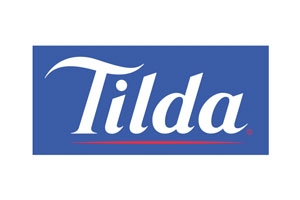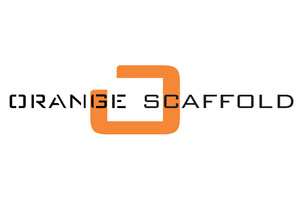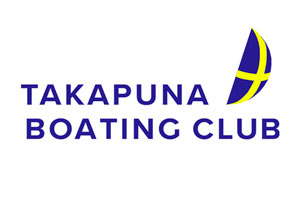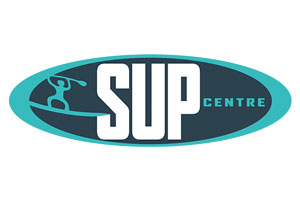The SUP board
Boards for stand-up paddleboarding come in a very wide range of constructions, shapes, sizes, styles and purposes. On this page we’ll take you through understanding the various dimensions and parts of the board, the various constructions on offer, and how to choose your first board…
Why are there so many different sizes and styles of board?
 The huge array of different SUP boards on the market is simply due to the fact that there are so many different possible uses (see Types of SUP ). Each major brand now has boards for racing (in various classes), boards for cruising, boards for beginner surf, boards for radical surf, and then quite probably several other niche uses such as boards for fishing, rivers, tandems, etc. And then of course, they have a variety of all-round/general-use models, in different sizes for different weights of rider. We’ll concentrate on those in this article.
The huge array of different SUP boards on the market is simply due to the fact that there are so many different possible uses (see Types of SUP ). Each major brand now has boards for racing (in various classes), boards for cruising, boards for beginner surf, boards for radical surf, and then quite probably several other niche uses such as boards for fishing, rivers, tandems, etc. And then of course, they have a variety of all-round/general-use models, in different sizes for different weights of rider. We’ll concentrate on those in this article.
The all-round board is something that cruises comfortably but could be used in small surf too if this is a direction you want to explore. Boards of this type are usually in the 10′ to 12” size range. Anything shorter is usually strongly orientated towards surfing, and will thus not be particularly suited to straight-line cruising (longer boards have better ‘glide’), while anything longer than 12 is orientated towards distance and racing, and will thus be extremely directional, with minimal surf suitability.
The board’s width is the most important indicator of stability. If you’re 70kg or more, then a good rule of thumb is to look for something with at least 30” of width. If you’re 90kg+ then going wider still will definitely make life easier.
Understanding the Dimensions
Understanding Length
Knowing a board’s length gives an instant understanding of how manoeuvrable/directional a board is, and from that can be inferred what its general role might be. (For simplicity, this spectrum does not attempt to include other specialist subgroups of boards such as river boards, yoga/fitness boards etc.)
The easiest way to understand board length is as follows:
Longer than 12′: Orientated towards distance and racing (longer boards have better ‘glide’), more directional, minimal surf suitability.
9’6′-12’6 : All-round boards. Comfortable cruising but could be used in small surf too if this is a direction you want to explore. This is the appropriate length for pretty much all first-time board purchases.
Shorter than 10′ : Surfing-orientated boards, not particularly suited to straight-line cruising (the more so, the shorter you go).
It is important to understand that length alone tells NOTHING about how stable or floaty a board may be. Try standing on a 30’ log and you will quickly appreciate that length doesn’t in any way equate to stability!
Understanding Board Widths
Width is the parameter that tells us about board stability. If you compare two boards of different widths, the wider one will almost invariably be the more stable of the two. And any SUP rider, if trying a range of boards of descending width, will eventually reach a width below which the board becomes too unstable to ride. This minimum ridable width is directly related to body weight, and tends to follow a fairly constant pattern. The table below shows the general correlation between board width and body weight, in terms of what is required to offer a stable platform for general recreational SUP on an all-round SUP board
Rider Weight Ideal Board Width
< 50kg < 30”
50-90kg 30”
70-110kg 32”
90-130kg 34”
130kg+ > 34”
The wide ranges and large overlaps are because rider height and physiology (balance skills, core strength etc) will also play their part in determining ideal board width, as will ability, fear factor, general fitness, and other factors such as fresh water vs salt water (salt being more buoyant), and of course water state (choppy vs flat etc). The board plan shape, rocker line and thickness will also influence stability. Nevertheless, the numbers in the table offer a good overall guide.
It is also important to appreciate that width is a ‘goldilocks factor’; it needs to be just right. Too little, and the board is too unstable for the rider. However, too much width means excess drag – there is too much board to push through the water. The board will feel slow & sedentary. Too wide a board will also mean that the rider cannot get the paddle shaft vertical on their stroke, which will prevent them refining their technique.
Understanding Volume
Understanding Thickness
Construction options
Paddleboards come in four main construction styles:
Inflatable
The large majority of SUP boards sold nowadays are inflatable, because of the huge advantages in terms of storage and transportation. They’re also a great option for families, as they’re very kid friendly, and the well-made ones can also be treated really rough, which is why they’re also pretty much the only sensible option for riding down rivers, bouncing off rocks along the way. However, not all inflatables are created equal – just like hard boards, there is a wide variation in the choice and quality of materials and manufacturing process – the best inflatables take 30x longer to build than the cheapest, so there is a wide variety in price. You get what you pay for, basically. The products from the good brands are actually surprisingly high performance and will last 10 years or more – the cheapest inflatables you’ll be lucky to get 2 seasons out of.
Epoxy/composite
Most ‘hard’ boards feature an epoxy-resin-impregnated outer skin cooked onto a pre-shaped polystyrene foam core. The choice of materials and layers used in creating the skin determines the stiffness, strength, weight and price tag of the finished product. In general, composite boards are the most expensive, but they are also the lightest option, and the highest in performance, due to their stiffness and rigidity. The vast majority of SUP surfing and racing boards are of hard construction, as small details in board shape matter in these environs, as does stiffness.
Although respectably tough, hard boards can be the least durable of the construction options, which is why some of the more beginner-orientated brands (or construction options) add an extra ASA (plastic) layer to the outside to toughen them up, at the cost of a bit of extra weight. Being big and solid, with no ‘give’ in their skin, composite boards will definitely hurt when they hit you, though – one of the main reasons other than price that the alternative construction options have relevance for the first purchase.
These are hard boards but with a foam top layer, or sometimes entirely foam construction, like beginner surfboards. These knockabout boards offer a lower cost option than the composite boards, and are very family-friendly, as the soft foam construction minimises risk of injury to persons or property .
Plastic
Blow-moulded polyethylene or polypropylene is the cheapest method of construction. This is the ‘plastic’ that many kayaks (and kids slides etc) are made from, and most paddleboards made this way are actually more like reshaped kayaks, with extra fittings, compartments etc, as it’s very easy to attach fixings to polypropylene. The boards are super durable but extremely heavy – ok you’re keeping one at the bach and you just need to drag it a few metres to the water’s edge, but too heavy for easy transportation, and they’re relatively slow and draggy in the water, too. Definitely a very cheap option though.
Understanding the shape
 Take a moment to familiarise yourself with the various parts of the SUP as shown in the diagram here. There is absolutely no requirement to know any of this technical stuff; it won’t make the slightest difference to your enjoyment of being on the water. However, a knowledge of the basic terminology is useful, just so’s you’re not completely in the dark when discussing your requirements with your retailer, or other enthusiasts.
Take a moment to familiarise yourself with the various parts of the SUP as shown in the diagram here. There is absolutely no requirement to know any of this technical stuff; it won’t make the slightest difference to your enjoyment of being on the water. However, a knowledge of the basic terminology is useful, just so’s you’re not completely in the dark when discussing your requirements with your retailer, or other enthusiasts.
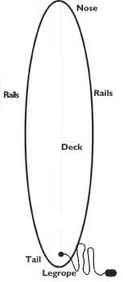
Nose, tail, deck and rails should all be self explanatory terms. Rocker is basically the curve in the board from nose to tail, and has a massive effect on how the board accelerates (the greater the curve, the less the acceleration) and turns (the greater the curve, the better the turning). So a board’s ‘rocker profile’ will determine how well it accelerates and glides, and how manoeuvrable it is. You may also hear people talking about ‘nose rocker’ or ‘tail rocker’, which is simply the curve just in that area of the boar, as shown below.
The underside of the board, when you put a straight edge across it from one side to the other, can either be flat, concave, convex, or rise to a central ridgeline, known as vee. Each of these again affects both the straight-line and the turning performance, and over the many decades of surfboard and windsurfing board design, pretty much very conceivable combination of these has been explored – and we’re now already beginning to see the same thing happening in SUP design too. We’ll cover what these parameters actually do in more detail in future issues, but at least now if someone tells you that their board has a lot of vee you will know what they are referring to.
Choosing Your First Board
When you’re looking to buy your first board the choice can seem bewildering, with so many options to choose from. So here’s a guide to how to approach it. Start by answering the following questions:
1. Who will the board be for?
Is it for you only, or will it also be used by other members of the family or friends?
2. The weight (and ideally also the height) of the heaviest rider who will be using it.
Easy if you are only buying it for yourself! Otherwise, a very important consideration. You have to buy the board to match the weight of the heaviest rider – which may well mean, if there is a wide range of rider weights hoping to use the same board, that it will be really big for the lightest rider. Getting a couple of boards might be the better option in this instance!
3. What is the board going to be used for?
Is it just for general cruising, or is the plan to use it for more fitness-orientated paddling, ie working up a sweat? Are you hoping to progress on to SUP surfing or SUP racing?
4. How do you intend to transport and store the board?
Once you have answers to all these questions, you should be able to narrow the choice down.
The type of board for a first time purchase will usually be an all-round board. So the length will be in the 9’6 – 12’6 all-round board range. If you are keen to progress to surfing then consider something at the shorter end of the scale, whereas if the board is for flat water paddling, for fitness work etc, look for something at the longer end of the all-round spectrum.
The minimum width of board can be recommended based on the table on the board widths section above.
The construction of the board can be recommended based on the answers to question 3 & 4. If you only have a small car and no roofrack then it’s going to need to be an inflatable. . Likewise, if it’s to be an all round family toy, likely to be used on a boat, then an inflatable will be the best way to go. Whereas if you’re looking for something with surf in mind, a hard board will probably be the best bet.
Please note that all the advice contained here is inevitably somewhat generalised. It’s impossible to give hard-and-fast advice that is universally applicable, since there is no standard model of human – we’re all different shapes, sizes, weights and with different wish-lists. If you’re young, light, already a competent surfer and wanting a paddleboard purely for riding waves, your ideal first board is going to be entirely different to the best choice for a middle aged lady with a bad hip wanting something to potter around with on her local duckpond. So the advice given here is good for the majority, but not for everybody. If you think you might be outside the majority, then go talk it through with your retailer. Demo some kit, try stuff out. See what works for you.

